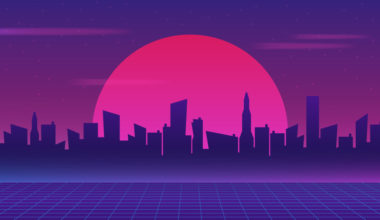“Every new beginning comes from some other beginning’s end.” – Seneca, Roman Philosopher (a long time ago)
The American consumer of the 1990s and 2000s/2010s is gone. Contrary to popular belief and the desires of many, I don’t believe our economy will return to the same level of consumer spending as before the COVID-19 outbreak. The shock of the sudden halt of large segments of the American economy will reverberate through the consumer base and change consumer habits and preferences forever.
Before we dive in, let’s recap the American economy and the status of the consumer in the first quarter of 2020:
- The US economy grew by 2.1% in Q4 of 2019, hitting a record $21.4 Trillion Dollars in 2019. (Wikipedia)
- Consumer spending (a.k.a. household consumption) makes up ~70% (68.2%) of the economy (Wikipedia) — Yes, 70% of the $21.4 Trillion US economy is from households spending money.
- In February, Household debt hit a record $14 Trillion (CNN).
- In 2019, 60% of Americans could not come up with $1,000 in savings in an emergency. (CNBC)
- 79.41% of Americans are employed in the service industry (Statista).
When you combine the above with a forced shutdown of broad aspects of the economy, the average American consumer is paralyzed. On the one hand, consumers have no savings, and on the other hand, they have record debt levels. As the shutdown continues for the next month to two months, consumers that have not already maxed out their debt carrying ability will take out additional debt to live. Consumer debt levels will likely continue to rise. To compound the problem, some Americans will miss their credit card payments, lowering their credit score and reducing their access to more credit and future ability to consume.
Across the board, the shock of the Coronavirus shutdown has forced households everywhere to think twice about their spending habits. I found myself pouring through my monthly services and canceling anything that is not essential to my mental health and survival in quarantine. The services industry workers that make up 79% of our economy are hit particularly hard. For example, If you’re a bartender, you probably never worried too much about losing your job because you could always waltz down the street to another bar or restaurant and find another job. Now, these workers are in an unforeseen environment. Although I think we can all agree that bars will reopen eventually, there is no precise timeline. The American workforce, confronted with new levels of fear and uncertainty, will think twice about their spending habits when the economy reopens.
Eventually, the US economy will reopen, and people’s lives will begin to resemble the previous state of “normal” that existed before COVID-19. However, the American consumer will not be the same. An indebted, more cautious, and the more frugal consumer will emerge from quarantine. If you knew relatives that lived through the great depression, you might remember that they had a different outlook on consumption habits. I remember my great aunt saved everything and was shocked by the wasteful “disposable” world of the 1990s. My great aunt would look at us now and tell us that we are wisening up.
So here we are, at the end of an era. Fueled by historically low-interest rates that provide virtually unlimited access to more debt, the American consumer did an exceptional job-consuming. We worked our hands to the bone, growing the US economy like clockwork and consuming a record ~14.6 Trillion of goods and service in 2019. Although economists will call the period after COVID-19 a recession, or maybe even a depression, we also need to acknowledge that our consumption habits leading up to this event were unsustainable.
Now that most Americans are stuck at home, with many forced out of work, we have a lot of time to reflect on our lives and on what’s important moving forward. While this Pandemic will deeply scar many Americans, we’re also incredibly resilient, and we will carry the lessons learned into the new post-pandemic economy. The American consumer is like a phoenix, falling to ashes during the COVID-19 Pandemic and reborn again into something new. So rest in peace American consumer of the 1990/2000s/2010s, and welcome to the new, wiser, more sustainable version of yourself.
In my next article, I will share some of my thoughts on how the new American consumer of the 2020s will impact business over the next decade and beyond.
Author’s Note: Last week, for the first time since launching my blog, I skipped an entry. Why? I have been physically and mentally exhausted from the current state of the world. My sister is an ICU nurse in Denver and the University Hospital, one of the brave health care workers that are keeping people alive and intubating critically ill COVID patients with ventilators. My wife is out of work because the restaurant she manages is shutdown. My mother-in-law is living through a military lockdown in Peru because of the Pandemic and the government’s fear of overwhelming their healthcare system. I have had more conversations in the past week about death, wills, life insurance, and the like than I have had during my entire life. The combination of everything has been draining. I appreciate your readership and hope that you and your family are safe and healthy!





1 comment
Great stuff, Matt. Sharing this.
Comments are closed.